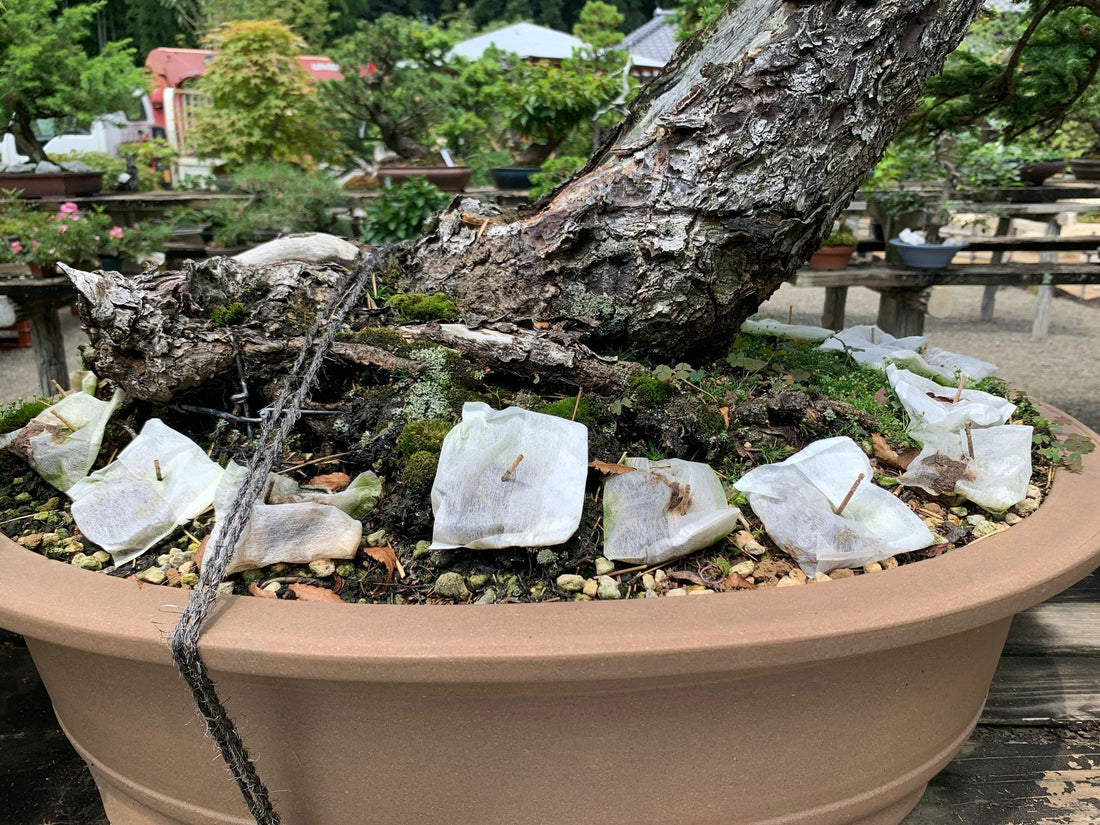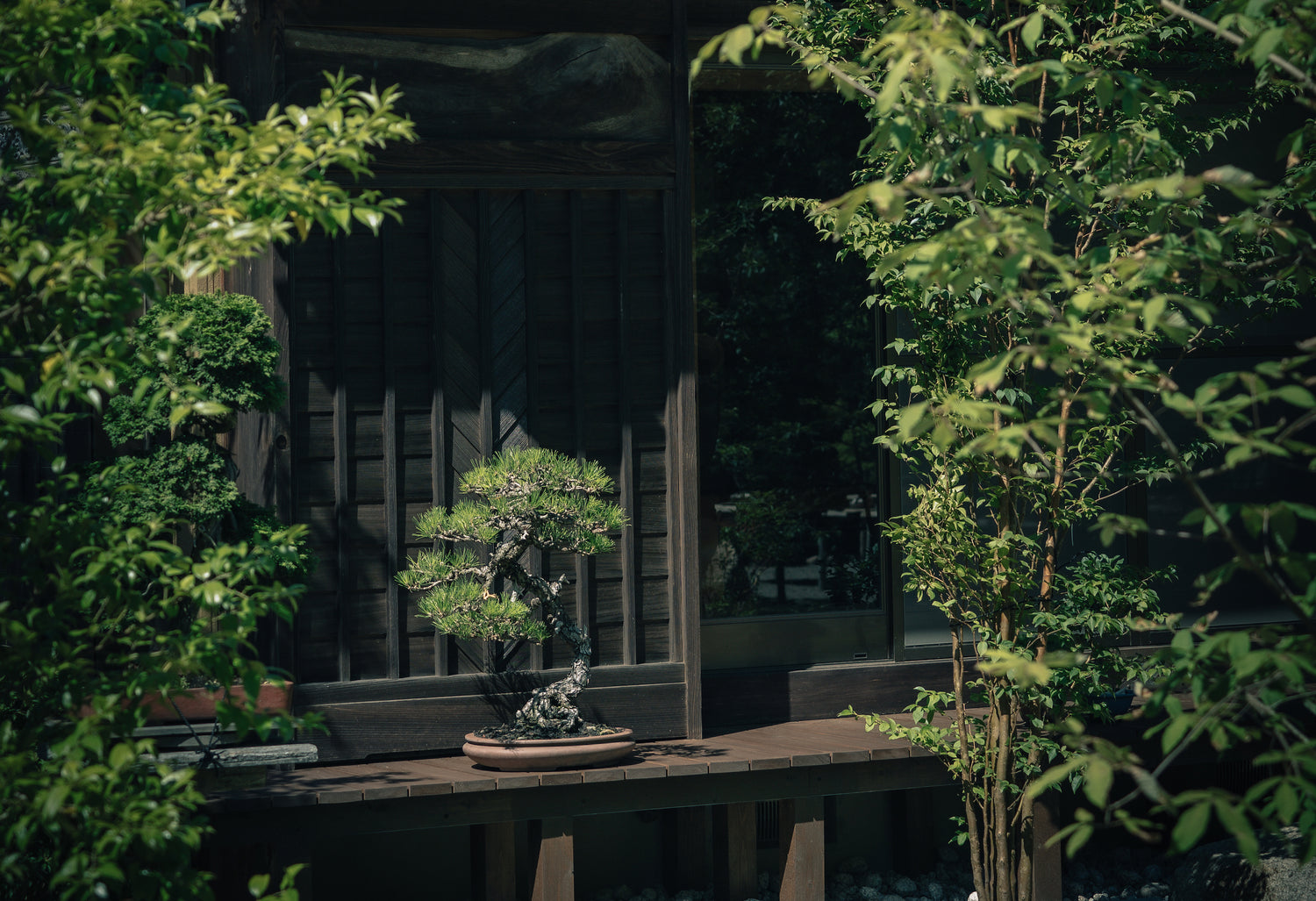At Tree House Bonsai, where we tend to some 2000 trees, we are used to preparing over 5,000 fertilizer packets (tea bags) each year to ensure the optimal health and growth of our bonsai. In this blog article, we aim to emphasize the crucial role of fertilizing and share our best practices.
Why do we fertilize?
Since bonsai are trees grown in pots, they have limited access to the nutrients naturally present in the soil. Without regular fertilization, these trees may experience malnourishment, resulting in stunted growth and compromised overall health. The role of fertilizers is vital as they provide the necessary nutrients to compensate for the restricted root system of these miniature trees.
Here is a non-exhaustive list of effects of fertilizer:
- Root development: Bonsai fertilizers contain nutrients that stimulate root growth and strengthen the root system, enabling the tree to absorb water and nutrients more effectively.
- Improved resilience: Well-nourished bonsai are better equipped to withstand stressors such as environmental changes, pests, and diseases.
- Flowering and fruiting: Certain fertilizers are formulated to encourage bonsai trees to produce flowers or fruits, enhancing their aesthetic appeal.
- Overall health maintenance: Regular fertilization helps maintain the long-term health of bonsai trees, ensuring they remain healthy and capable of life in a pot.

White Pine fertilizer

Red Pine Fertilizer
 Kaede fertilizer
Kaede fertilizer
Fertilizer composition
The typical fertilizers used in bonsai are often formulated with a balanced NPK ratio, such as 10-10-10 or 20-20-20, representing the relative percentages of nitrogen (N) to grow leaves and stems, phosphorus (P) to help roots to grow, and potassium (K) to improve the overall health of the tree.
At Tree House Bonsai, we utilize an organic pelletized fertilizer called "Biogold," which is derived from chicken manure. Organic bonsai fertilizer provides a more gradual and gentle release of nutrients compared to chemical fertilizer, thus ensuring a well-rounded supply for the bonsai tree.

Our Fertilizing Calendar
At Tree House Bonsai, we follow a fertilizer calendar tailored to the Japanese climate, so keep it mind that it may vary depending on your location. Our fertilization practices align with the growing season of the trees, which spans from spring through fall. As the trees enter their dormant phase during winter, fertilization during this period is unnecessary since the trees are in a resting state.
March
- 1st round of fertilizer application: we fertilize every plant in the garden, except for Japanese maples and Japanese white pines.
- We schedule our fertilizing to align with the solstice and equinox.For instance, if we begin on the 15th, we ensure everything is ready by the 22nd.
- Due to the large number of trees (2000), we divide the fertilization process into a window of time.
April & May
- We will continue fertilizing the same species as we did in March, which includes all trees except for Japanese maples and Japanese white pines.
- Half of the total fertilizer amount we intend to apply during the spring is distributed between March and April.
- If the fertilizer is absorbed quickly, we have the option to apply more in May.
- Additionally, we apply a foliar feed of kelp extract every two weeks from May through September on all species throughout the garden. This practice aligns with the pesticides calendar for export.
June
- We remove the fertilizer from the black and red pines that are scheduled for decandling.
- If we are not planning to decandle trees, we do not remove the fertilizer. Fun fact: the decandling process for red and black pines is aligned with the solstice.
July
- First application of fertilizer on our Japanese maples and Japanese white pines.
- Starting in July, we conduct checks on all the trees that received fertilizer during spring to assess if additional fertilizer is needed.
August & September
Second and third (where needed) application on every tree in the garden.
October
As we reach October, the growing season concludes and daylight length shortens. Trees relying on daylight cues start to enter a vascular growth phase. However, in Japan, where temperatures remain higher for longer, certain trees that respond more to temperature cues may continue active growth until late September or early October.
To address this, we delay fertilizer removal until the end of October, allowing it to benefit the trees during the cooler months leading into dull winter dormancy. This ensures nutrient availability aligns with their specific needs and supports their growth in the following year.

Our fertilization approach involves dividing the groups of trees into those fertilized in spring, Those focused on fall application, and others that receive continuous fertilization throughout the full growing season. This strategy allows us to cater to the specific needs of each group and maintain their optimal health and growth.



